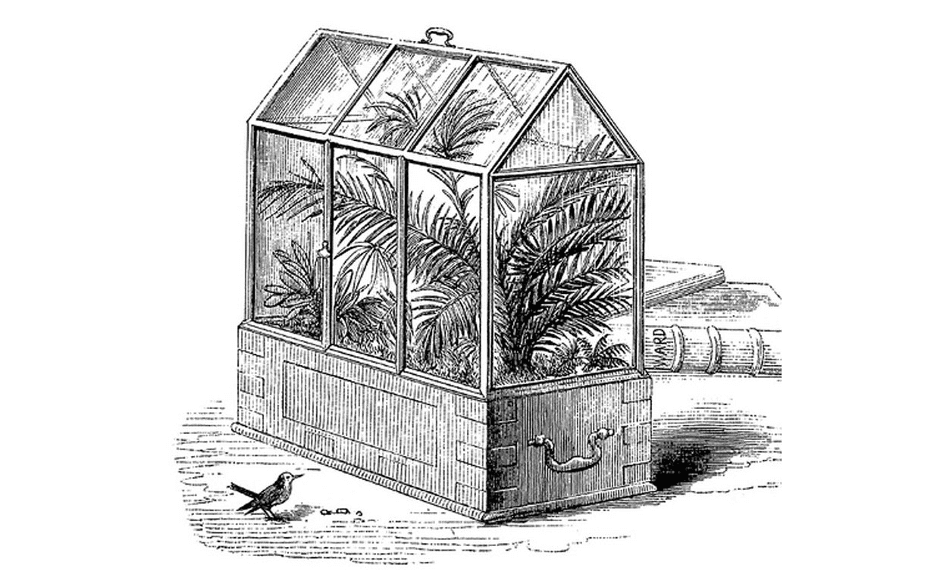Have you ever wondered how terrariums, those captivating little ecosystems, came to be such a beloved part of indoor gardening? The story of terrariums dates back to the late 1820s when an accidental discovery by Nathaniel Bagshaw Ward, a hobbyist botanist from London, set the stage for their fascinating history. Let’s take a journey through time to see how these miniature gardens have evolved and charmed plant enthusiasts for centuries.
The Birth of Terrariums: A Happy Accident
In the late 1820s, Dr. Nathaniel Bagshaw Ward stumbled upon a remarkable discovery. While observing a sphinx moth chrysalis, he noticed a fern seedling sprouting into a plant. This led him to realize that humidity-loving plants could thrive in a confined space. Inspired by this, Dr. Ward created the "Wardian Case", a small, elegant greenhouse designed to protect plants during long sea voyages. This invention revolutionized the transportation of exotic plants, bringing a variety of species from places like South America and Australia to London.

The Victorian Obsession
The Wardian Case quickly became a symbol of Victorian sophistication. Wealthy households adorned their indoor spaces with these elegant glass cases, filled with lush, miniature landscapes. Terrariums offered a way to enjoy nature indoors, even in the polluted air of industrialized cities. Advertisements and gardening journals of the time showcased terrariums as a means to protect the "splendour of nature" from the "ravages of modern industry." This Victorian craze for indoor gardening laid the foundation for our modern love of houseplants.

Miniature Unpolluted Worlds
Terrariums provided a clean, green sanctuary for the middle and upper classes, shielding plants from industrial pollution. They allowed Victorians to indulge in a fantasy of nature restored to a preindustrial state of perfection, a stark contrast to the factory chimneys outside. While seen as decorative, terrariums also served as a "vehicle for environmental scrutiny," connecting homes to the larger planet.

The Houseplant Revolution and Modern Revival
The concept of bottle gardens, also known as terrariums, saw a resurgence in popularity alongside the broader houseplant trend in recent decades. These self-contained, miniature landscapes allowed people to create unique and decorative plant displays within their homes, even in small spaces with limited room for traditional houseplants.
Since the 1960s, terrariums have made a notable comeback, influenced by mid-century modern design aesthetics and the growing desire to bring nature into urban living spaces. Their aesthetic appeal and therapeutic benefits have driven this renewed interest. Creating and maintaining terrariums offers a sense of control and mindfulness, providing a calming effect that helps reduce anxiety and stress. Their visually appealing designs and "Instagrammability" have further contributed to their popularity.
Conclusion
From accidental discoveries to modern-day living rooms, terrariums have evolved into captivating miniature ecosystems that continue to enchant plant lovers. They played a pivotal role in global plant exploration, fueled the Victorian obsession with indoor gardening, and now offer a therapeutic escape in our busy lives. As we embrace the modern terrarium revival, we celebrate their beauty, benefits, and ability to bring a touch of nature's serenity into our homes.
Terrariums stand as a testament to our enduring fascination with the natural world. In an ever-changing landscape, these verdant sanctuaries remind us of the restorative power of greenery and the importance of nurturing our relationship with the environment. Whether you're a seasoned plant enthusiast or a novice looking to add a bit of green to your space, terrariums offer a charming and easy way to garden indoors.
For more guides on houseplants and terrariums explore our blog and shop our range of low-maintenance ecosystems with FREE delivery on orders over £50.
FAQ
1. What is a terrarium?
A glass container that has self-contained plants in it is called a terrarium, where all components are put together to create small ecosystem which makes greenery indoors easier and minimal.
2. Who discovered terrariums?
The first person to discover terrariums was Dr. Nathaniel Bagshaw Ward, a London based amateur botanist, in the late 1820s. After he saw how fern grew on top of soil inside his jar;he ended up making the first ever Wardian Case named after him.
3. What is a Wardian Case?
A Wardian Case is an early type of terrarium invented by Dr. Ward. This elegant glass enclosure was designed to protect plants during long sea voyages, making it possible to transport exotic species across the globe.
4. Why were Wardian Cases important in the Victorian era?
During the Victorian era, Wardian Cases became symbols of sophistication. They allowed people to cultivate exotic plants indoors, even amidst the polluted air of industrial cities. These cases also played a crucial role in global plant transportation, fueling the Victorian passion for indoor gardening.
5. How did terrariums help with plant transportation?
Wardian Cases provided a controlled environment that kept plants healthy during long journeys. This innovation allowed explorers and botanists to transport live plants across oceans and continents, greatly expanding the variety of plants available in Europe.
6. Why did terrariums become popular again in modern times?
Terrariums made a comeback in the 1970s and have gained popularity again due to their aesthetic appeal, ease of maintenance, and the growing trend of bringing nature into urban living spaces. They also offer therapeutic benefits, helping to reduce stress and anxiety.
7. What are the benefits of having a terrarium?
Terrariums are low-maintenance, visually pleasing, and perfect for small spaces. They provide therapeutic benefits by reducing stress and promoting mindfulness, allowing you to enjoy a touch of nature indoors.
8. How do you care for a terrarium?
Terrariums require minimal care. They need indirect sunlight, occasional watering, and some pruning to keep the plants healthy. The enclosed environment helps maintain humidity, reducing the need for frequent attention.











